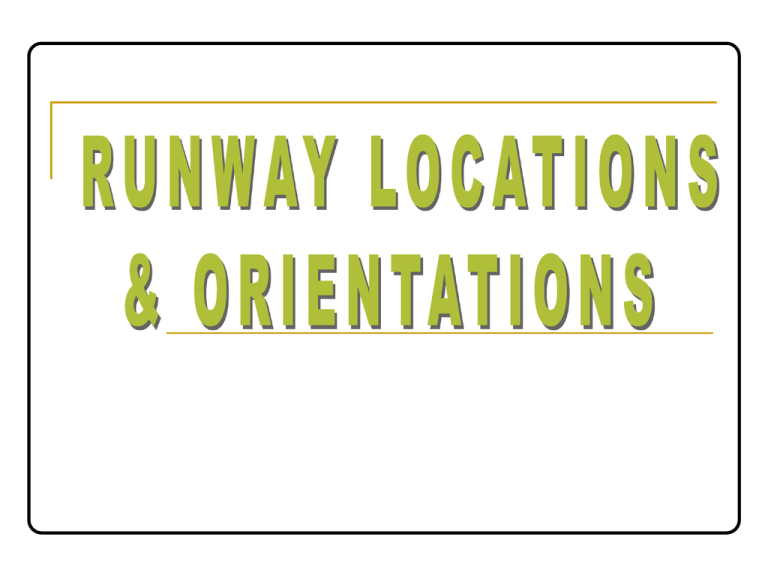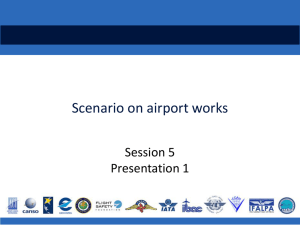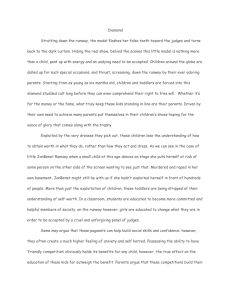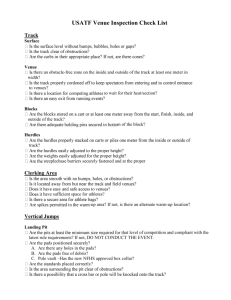LEC -11
advertisement

Runway Location Considerations The following factors should be considered in locating and orienting a runway: Wind Airspace availability Environmental factors (noise, air and water quality) Obstructions to navigation Air traffic control visibility Wildlife hazards The orientation of the runway is an important consideration in airport planning and design The goal of this exercise is to define the runway orientation that maximizes the possible use of the runway throughout the year accounting for a wide variety of wind conditions FAA and ICAO regulations establish rules about runway orientation and their expected coverage Ideally, all aircraft operations on a runway should be conducted against the wind Unfortunately, wind conditions vary from hour to hour thus requiring a careful examination of prevailing wind conditions at the airport site Design criteria Provide a runway (or runways) orientation that satisfies 95% coverage (i.e., crosswinds below a critical value) considering yearly wind conditions If one runway does not meet the 95% criteria design a second crosswind runway Data Source Carefully use weather record from two or more nearby stations if wind data is not readily available at the proposed airport site (be very careful of local weather effects) For mountain terrain with data without wind data, the use of nearby stations is of questionable value. Take one year of wind data if possible. Use 5-10 years of data for airport planning purposes (except when you are collecting data yourself.) How to use WIND ROSE for determining the Runway Orientation Optimum runways directions can be determined from the wind rose by the use of a strip of transparent material on which three parallel and equally spaced lines have been plotted. The middle line represents the runway center line and the distance between this line & each outside line is, to scale, equal to allowable cross wind component wind rose graphically depicts wind velocities, directions, and their probability of occurrence in a format resembling a compass.The radii of the concentric circles arc scaled to represent wind velocities of 4, 13, 25, 32, and 47 mph. Each direction subtends an angle of 22.5 degrees. How to use WIND ROSE for determining the Runway Orientation The transparent strip is placed over the wind rose in such a manner that the center line on the strip passes through the center of the wind rose. With the center of the wind rose as pivot point, the transparent overlay is rotated until the sum of the percentage included between the outside line is a maximum. How to use WIND ROSE for determining the Runway Orientation The next step is to read the bearing for the runway on the outer scale of the wind rose where the center line on the transparent strip crosses the direction scale. True north is used for designating the bearing. The next step is to examine wind data during restricted visibility conditions cited previously. Plot a wind rose for this condition. From this analysis it can be analyzed that whether the runways are capable of accepting planes at 95% of the time when restricted visibility conditions prevails.



